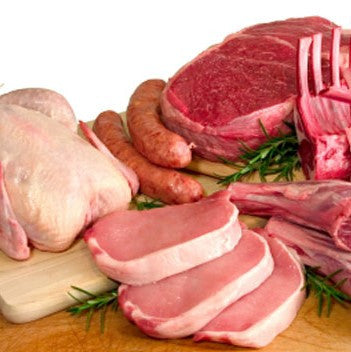Eating for sporting performance differs between sports. You have to consider the type of sport it is – power, endurance, strength... Each of these types have differences in how or when you should eat to perform at your best. The big question then, is what should you be eating for your sport?
This 2 part article is going to consider Rowing as an example. It aims to detail what a rower should be eating and when they should be eating it, then more importantly – how much they should be eating. If you aren't a rower, the key information here can be applied across any sport.
To fully understand nutrition, you must first consider macronutrients. This refers to your fats, carbohydrates and proteins – you'll likely have heard of all of these, how protein is used for recovery, carbohydrates (which are beginning to get a bad rep) are for energy (kind of), and fats … well, they make you fat (That's not actually true).
Protein
Protein helps the body build and maintain muscle. Dropping your protein intake has been  shown to increase the rate of muscle loss when in a calorie deficit, which obviously we don't want. So keeping our protein intake high is necessary, we know that. Protein also provides greater satiety – we get full quicker; therefore, you are more likely to stick to your calorie intake for the day as you won't be as hungry! Protein has 4 calories per gram on average.
shown to increase the rate of muscle loss when in a calorie deficit, which obviously we don't want. So keeping our protein intake high is necessary, we know that. Protein also provides greater satiety – we get full quicker; therefore, you are more likely to stick to your calorie intake for the day as you won't be as hungry! Protein has 4 calories per gram on average.
Where do I get it?
Protein comes from a range of foods, for example, Meat, Fish, Dairy, Eggs, Protein shakes…
Protein is found in other foods such as nuts, or seeds, but often these have higher fat % than they do Protein, so factor that in when you're tracking!
Carbohydrates
 Carbohydrates are NOT BAD. They help recovery, give you energy, help you sleep, these are the things that actually help you burn fat by getting your hormones in check. They are also where a lot of energy for endurance events comes from. There are two types of carbohydrates – Sugar and Starch, each is absorbed and used at a different rate. Sugars appear in foods such as fruit, cereals and sweets, these should be avoided for the most part, while starches can be found in potatoes, rice and bread. Starchy carbohydrates should make up the most part of your carbohydrate intake to optimise your sporting performance.
Carbohydrates are NOT BAD. They help recovery, give you energy, help you sleep, these are the things that actually help you burn fat by getting your hormones in check. They are also where a lot of energy for endurance events comes from. There are two types of carbohydrates – Sugar and Starch, each is absorbed and used at a different rate. Sugars appear in foods such as fruit, cereals and sweets, these should be avoided for the most part, while starches can be found in potatoes, rice and bread. Starchy carbohydrates should make up the most part of your carbohydrate intake to optimise your sporting performance.
Carbohydrates also have 4 calories per gram.
Where do I get it?
Carbohydrates typically come from Potatoes, Rice, Grains and Bread etc. though sugars are also a carbohydrate, so pay attention to them too.
Fats
Fats are required by the body to live. Hormone Function, Vitamin absorption, brain function and a source of energy are some of the reasons to intake plenty of healthy fats. Fats have 9 calories per gram.
Where do I get it?
Here is a list of healthy sources of fats that you can look at for an example:
- Avocado
- Olive Oil
- Coconut Oil
- Coconut Milk
- Coconut flakes
- Almonds
- Brazil Nuts
- Chestnuts
- Hazelnuts
- Macadamia Nuts
- Pistachios
- Walnuts
- Pumpkin Seeds
- Sesame Seeds
- Almond Butter
- Cashew Butter
- Organic Grass-Fed Ghee
- Organic grass-fed butter
- Pecans
- Pine Nuts
That's it for part 1, you now know where to source your macros from. Read on to part 2 to find out how to calculate them and apply them in a real life setting: PART 2 HERE
